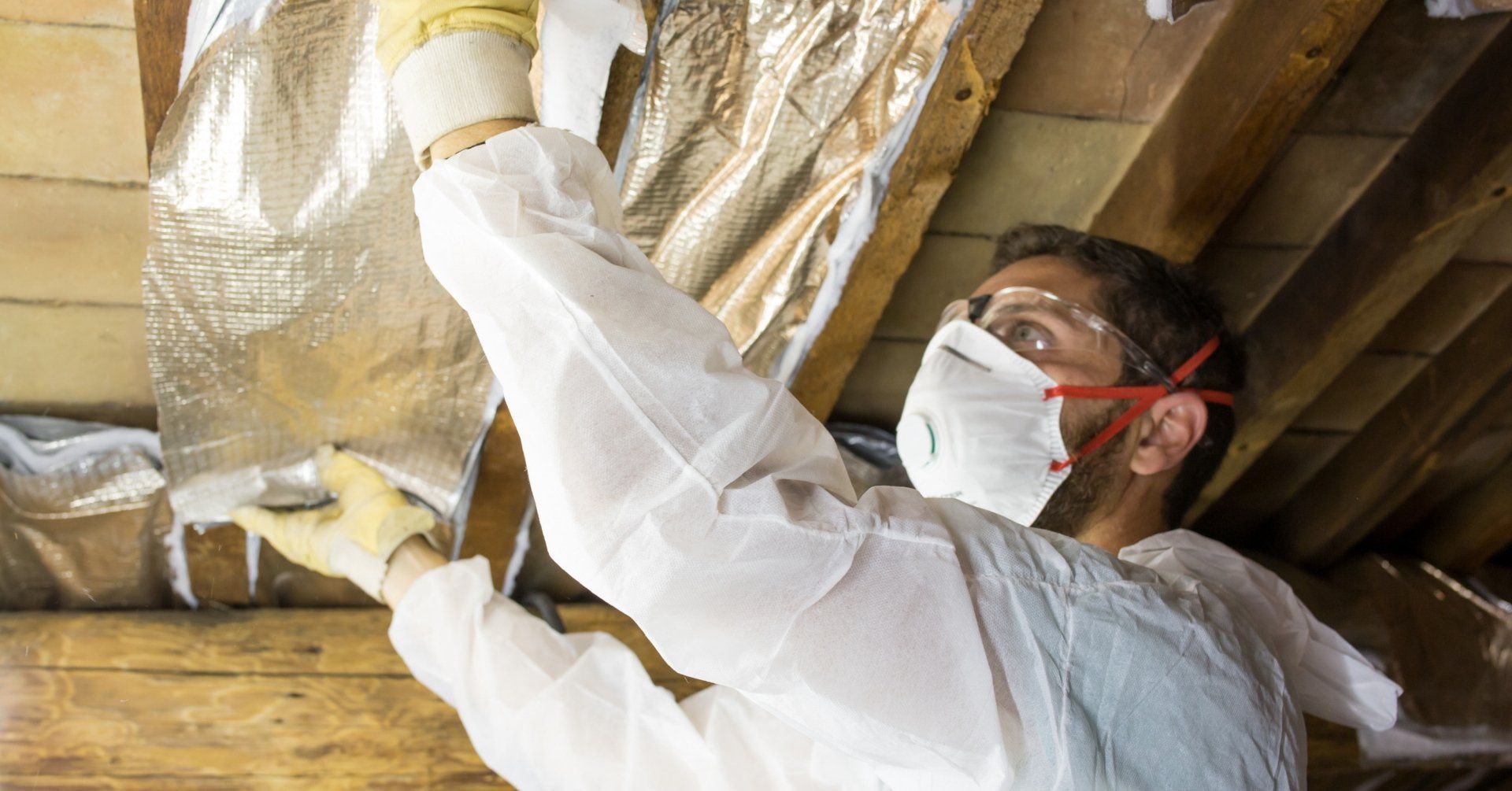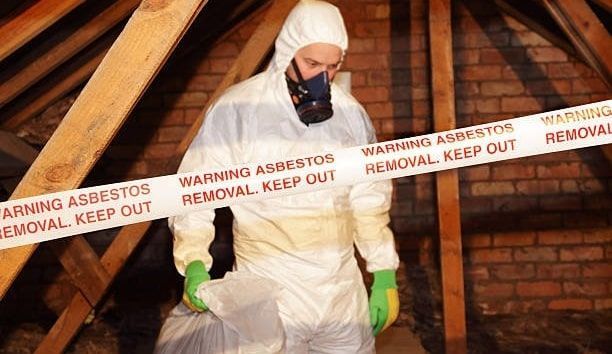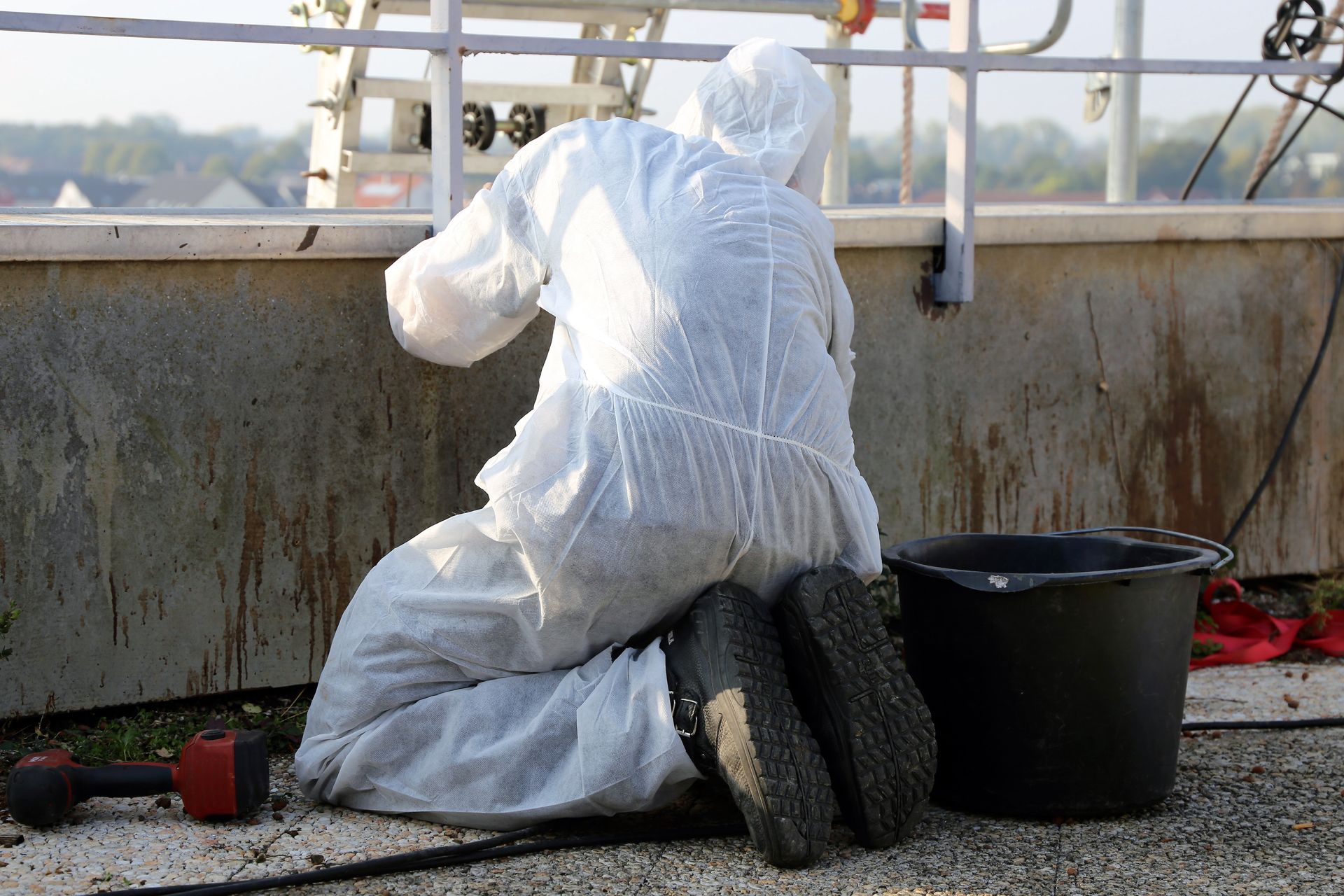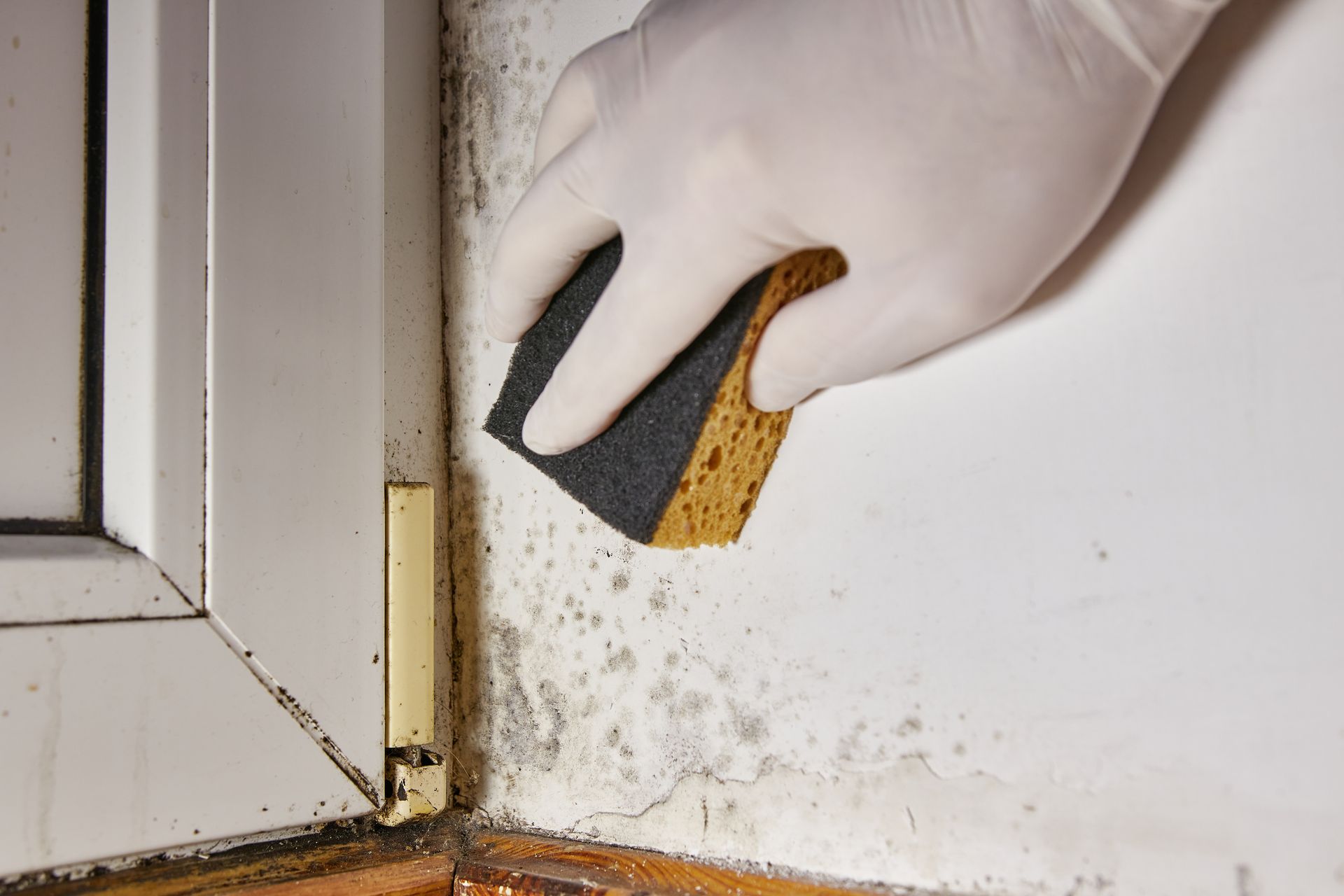The Risks of Asbestos Exposure in Commercial Buildings: What You Need to Know
Asbestos is a hazardous material that can cause serious health problems if the proper precautions are not taken. It is found in many older commercial buildings, and unknowing occupants of these structures may be exposed to asbestos fibers without knowing it. In this blog post, we will explore the risks of asbestos exposure in commercial buildings and what you need to know to protect yourself and others. We will discuss what asbestos is, how it can affect health, and the steps you should take to reduce the risk of exposure in your workplace or home. Read on to learn more about the dangers of asbestos and ways to protect yourself from potential harm.
1. Inhalation of Asbestos Fibers
Inhalation of asbestos fibers has been linked to numerous adverse health effects, with some of the most common complications arising from prolonged and/or repeated exposure being asbestosis and mesothelioma. Inhaling these microscopic fibers can cause them to become lodged in the lining of primary organs such as the lungs, heart, and abdomen, resulting in damage within these areas.
As such, it is essential for those occupying commercial buildings to be aware of the potential risks associated with uncontrolled exposure, taking steps to ensure preventative measures are properly taken for their own health and safety.
2. Skin and Eye Irritation From Handling Asbestos Materials
Handling asbestos materials without proper protection and training can cause skin and eye irritation to those who are exposed. For example, even touching dry asbestos materials could release airborne particles that may be inhaled or absorbed by the skin.
While this doesn't seem like a life-threatening risk, long-term exposure may lead to additional health risks such as breathing problems, weakened immune systems, and increased risk of certain kinds of cancer. If you suspect asbestos exposure in the workplace, it’s especially important to contact a licensed contractor for an asbestos abatement plan.
Working with trained professionals will help protect both your health and the health of your co-workers from any potential risks associated with asbestos.
3. Carcinogenic Effects of Asbestos Exposure
Asbestos exposure has been linked to a variety of cancerous illnesses, including cancers of the lungs, larynx, and ovaries. When asbestos fibers are inhaled or ingested, they can become lodged in cells and eventually cause mutations that can lead to a wide range of conditions. The following are five carcinogenic effects associated with asbestos exposure:
- Lung Cancer: Exposure to asbestos is the primary cause of mesothelioma, a rare and deadly form of cancer that develops in the lining of the lungs. It can also lead to other forms of lung cancer.
- Laryngeal Cancer: Asbestos exposure has been linked to an increased risk of laryngeal cancer, which is a type of cancer that affects the larynx.
- Ovarian Cancer: Women who have been exposed to asbestos may be at increased risk for developing ovarian cancer.
- Gastrointestinal Cancers: Asbestos exposure has also been linked to an increased risk for several types of gastrointestinal cancers, including esophageal, stomach, and colorectal cancer.
- Kidney Cancer: Asbestos exposure has also been associated with an increased risk of developing kidney cancer.
The risks of asbestos exposure are very real and should not be taken lightly. Those occupying commercial buildings should always be aware of the potential health consequences that could arise from prolonged and/or repeated exposure to asbestos fibers, taking steps to ensure preventative measures are taken for their own safety. With proper precautions in place, occupants of commercial buildings can protect themselves and their families from the potential harm of asbestos exposure.
4. Long-Term Respiratory Health Risks Associated With Inhalation of Asbestos Particles
Inhaling asbestos particles can lead to long-term respiratory health risks, such as:
- Asbestosis: This chronic lung disease is caused by the inhalation of asbestos fibers and is characterized by inflammation and scarring in the lungs. Symptoms include shortness of breath, coughing up blood or mucus, chest pain, and difficulty breathing.
- Mesothelioma: This is a rare cancer of the lining of major organs, such as the lungs and abdomen, that is caused by asbestos exposure. Symptoms may include chest pain, shortness of breath, fluid buildup in the chest or abdomen, and weight loss.
- Lung Cancer: Asbestos has been linked to an increased risk of lung cancer, which is characterized by coughing and chest pain.
- Throat Cancer: Asbestos exposure can also increase the risk of developing throat cancer, which is often indicated by a sore throat that does not go away.
- Kidney Health Risks: Inhaling asbestos may also lead to an increased risk of developing kidney disease, which can cause symptoms such as swelling in the legs and feet, fatigue, and difficulty breathing.
It is important to understand the long-term respiratory health risks associated with the inhalation of asbestos particles. Commercial building occupants should be aware of these potential dangers and take steps to reduce their exposure to hazardous materials.
5. Potential for Accumulation and Spread of Airborne Asbestos Material Within a Commercial Building
As asbestos-containing materials age and become damaged or disturbed, these fibers separate from the original material and become airborne, potentially creating an ongoing health risk for people who work or reside in the building. Without proper maintenance and frequent inspection of materials, asbestos accumulation can go undetected; it also takes very little disturbance to trigger its release into the ambient atmosphere.
Moreover, once airborne asbestos particles have been dispersed in a commercial building, they can be spread through its various sections via circulation systems such as air conditioning or forced air systems. It is imperative that commercial building owners take proactive steps to maintain their structures, reduce potential exposure and prevent the accumulation of harmful asbestos-laden particles that may present serious health risks to their occupants.
6. Risk Posed to Construction Workers Who May Be Exposed to High Levels of Airborne Dust From Working With Contaminated Materials in the Demolition or Renovation Process
Construction workers may be exposed to high levels of airborne dust when working with contaminated materials in the demolition or renovation process. This is especially true of buildings that contain asbestos, as inhaling these microscopic fibers can lead to a variety of adverse health effects. Some of the most common risks posed to construction workers who are exposed to high levels of asbestos-containing dust include:
- Inhalation of Asbestos Fibers: Prolonged and/or repeated inhalation of asbestos fibers can lead to the development of serious diseases such as asbestosis, mesothelioma, and lung cancer. It is essential for workers in these fields to take necessary safety precautions when working with contaminated materials to protect their health.
- Skin Irritation: In addition to inhalation, asbestos-containing dust may also cause skin irritation when handled without proper protection or training. Touching dry asbestos materials could result in airborne particles that may be inhaled or absorbed through the skin. Over time, this can lead to weakened immune systems and an increased risk of certain kinds of cancer.
- Carcinogenic Effects: Asbestos exposure has been linked to a variety of cancerous illnesses, including cancers of the lungs, larynx, and ovaries. When asbestos fibers are inhaled or ingested, they can become lodged in cells and eventually cause mutations that can lead to life-threatening conditions.
- Respiratory Risks: Inhaling asbestos particles can cause long-term respiratory health risks such as mesothelioma, lung cancer, laryngeal cancer, and ovarian cancer. It is essential to be aware of the potential health consequences that could arise from prolonged and/or repeated exposure to asbestos.
- Accumulation and Spread of Airborne Asbestos: If asbestos-containing materials are not properly maintained, the fibers can separate from the original material and become airborne, potentially creating an ongoing health risk for those who work or reside in the building. It is important to take steps to reduce exposure to hazardous materials within a commercial building.
The risks of asbestos exposure in commercial buildings should not be taken lightly. It is essential for building occupants to be aware of potential health consequences that could arise from prolonged and/or repeated exposure to airborne particles. With proper precautions in place, both individuals and businesses can protect themselves from these dangers and ensure a healthy environment.
7. Disruption Caused by Remediation Activities Such as Sealing, Encapsulating, or Removal of Friable (Easily Crumbled) Materials Containing Asbestos
Remediation activities such as sealing, encapsulating, or the removal of friable (easily crumbled) materials containing asbestos may cause disruption to building occupants and their operations. In order to properly prepare for any upcoming remediation efforts and minimize the potential disruption they can cause, it is essential to:
- Familiarize yourself with the process: Become informed about the multi-step remediation process and understand how it will affect operations within your building.
- Secure a reputable contractor to conduct the work: Make sure to hire an experienced and licensed contractor who is familiar with asbestos abatement procedures and has a proven track record of successful projects.
- Implement preventative measures: Establish a plan to minimize the spread of airborne asbestos particles during remediation activities and ensure proper safety measures are being followed.
- Establish an effective communication strategy: Communicate the timeline of events prior to beginning any work, as well as any necessary changes in operations or workplace policy that may occur due to the remediation process.
Building occupants must be aware of the potential disruption caused by asbestos remediation activities. Taking the necessary steps to properly prepare for these efforts will help reduce any inconvenience and ensure a safe environment.
8. High Cost Required for Professional Removal Procedures
Asbestos exposure is a serious safety concern in commercial buildings. The primary way to prevent it is to have professional asbestos removal procedures put into place. Unfortunately, this tends to be a costly endeavor.
Depending on the size and complexity of the job, asbestos abatement can cost anywhere from a few hundred dollars for small-scale projects to thousands for larger projects that require more extensive removal efforts. In addition, there will likely be an even higher cost in terms of time and labor when it comes to cleanup and decontamination after the materials have been removed.
It is imperative that these steps are taken seriously as failure to do so could result in long-term health complications associated with asbestos exposure.
Asbestos exposure is a serious safety concern in commercial buildings. It can lead to a variety of illnesses and conditions if left untreated, including lung cancer, mesothelioma, laryngeal cancer, ovarian cancer, and kidney health risks. In order to protect their occupants from potential harm caused by asbestos exposure, it is essential that building owners take proactive steps to maintain their structures, reduce potential exposure, and prevent the accumulation of hazardous particles. Though asbestos abatement can be a costly endeavor, it is important to understand the risks associated with not taking these steps seriously as they could lead to long-term health complications down the line. Taking the necessary precautions when dealing with asbestos-containing materials is the best way to ensure a safe and healthy environment for everyone.
Ready to keep yourself and your loved ones safe from hazardous asbestos exposure? Look no further than
Hathaway Environmental for the best mold and asbestos removal service in Solon, Lakewood, Cleveland, Akron, Twinsburg, Richfield, Fairlawn, OH, and surrounding areas. With 15 years of experience in the field and a commitment to customer satisfaction, we are your go-to for all of your mold and asbestos removal needs. Don’t wait any longer - get in touch with us today at (216)-538-8355 and let us give you a free estimate on our services! We look forward to hearing from you and helping you keep yourself and your loved ones safe from hazardous materials.












